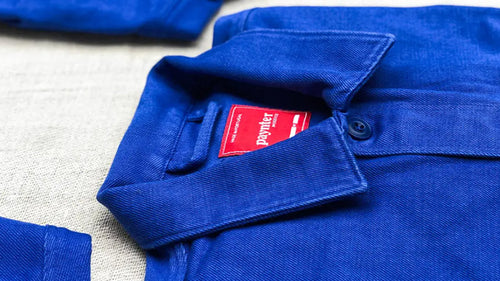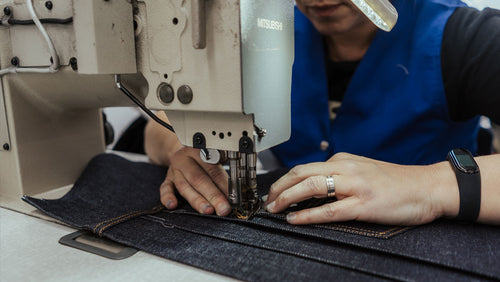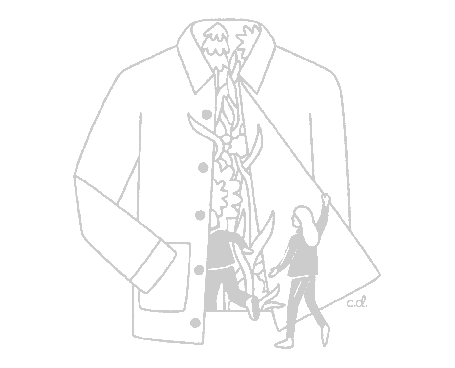You might recognise Lucy's ear tiles from our list of brands & businesses we love, or from our recent Batch No.7 campaign. When she's not assisting Antony Gormley, she's in her own studio working on a distinctive body of work. Read more in the interview with Lucy Page below.
How do you describe your work and style?
My work is sculptural and functional. It is bodily and tactile. I believe my style bridges the gap between design and function; either as pieces of art or used as functioning objects. The theme of the everyday and our domestic lives definitely connects it together, using food, body parts and other everyday objects. My work is also very physical- the process and making is extremely important to the work. Using traditional casting and mould-making techniques, each work takes days to make. With that, every piece becomes unique.
When did you first start making objects that resemble your work today?
In my final few months studying at university. I had been playing around enlarging domestic objects/appliances and somehow body parts got involved too. I was reading and writing alongside the making, and reading Practice of Everyday Life by Michel de Certeau which writer Luce Giard discusses our bodily gestures & everyday habits in the kitchen. Now I like to think my objects are both bodily and domestic. I’ve definitely honed it down since then- I was trying to be that slightly wacky art student, but now I just want to make more functional work that can appeal to all. And as long as it mainly just appeals to me, I don’t worry too much what other people will think.
It’s rare to find your subject so early on, without being tempted off-subject. How did you know that there was a going to be a huge body of work once you started working with the body parts.
To be honest I hadn’t anticipated it but my work develops through the making and each piece and each new body part triggers the next. So as soon as I began casting one body part and it felt effective it became continuous and always evolving. I have come to realise freezing these moments and movements into tactile objects and making them accessible in our everyday lives is what I love doing and therefore doesn’t tempt me to go off-subject/find a different one. The body parts are so relatable and familiar to us all, and so using that and placing them in perhaps more unfamiliar ways has created this body of work and will continue to do so for future bodies of work.
Despite having a very clear subject matter, you’re always innovating with new materials and shapes.
How do you decide what to make next?
I spend some of the time sketching and taking old ideas and old objects, body parts etc to manipulate into or onto something new. But a lot of it comes from our day-to-day lives, seeing things around me and how that informs my everyday. For example, my dad is building a Japanese Kyoto inspired garden using huge stone found on their land. I’m now casting mini versions of these stones (picked up from the streets of London) and manipulating them into my work.

You spend Wednesdays and weekends working for yourself, and the rest of the week in the studio for another artist. How have things changed since you decided to take Wednesdays to work on your own work?
Ironically life feels even busier (in a good way of course) but also it has taken the pressure off in some way- it feels easier to spend a bit more time experimenting than just working on orders/commissions. Wednesday is now my day to re-think and re-design where my studio is that outlet. It is all about balance and I hadn’t realised until I went part-time at my day to day job how important having that time for myself and my own work is. Excitingly it has also opened up more doors and allowed me to take on some new big commissions..

Who’s work do you admire?
William Scott for his everyday still-life’s.
Cornelia Parker for her use of materials- she has stated that she is drawn to “things that are kind of commonplace and that are so ubiquitous everyone understands what they are. I take very simple things and use them to achieve the abstract. I find that recognisable things and found objects are a way into the surreal.” - I like to think I am also on-board with that within my work.
(Mona Hatoum - Grater Divide, 2002)
Mona Hatoum for her bodily and domestic references.
And Faye Toogood for her interiors and interior objects. I have listened to her on the Modern House podcast a couple of times and really resonate with some of the things she discusses where fine art and interior objects become blurred.
Can you tell us about someone who taught you a lot, but wasn’t an actual teacher?
We had some great facilities at university with technical teams running and facilitating them. The head of casting was an amazing teacher to me, Claire Baily, also an amazing artist. She helped form the basis for all the technical skills I have today which enable me to make the work I do, as well as giving valuable post-uni advice which you didn’t tend to get from anywhere else. I am forever grateful for what she taught me.

What are you working on at the moment?
I’ve downsized and upsized both at the same time which is fun. I’m working on smaller (baby) versions of my sculptural bowls but I’m also thinking more about interiors (aren’t we all since lockdown) and designing some furniture like work. I am also working on an exciting collaboration and experimenting with a new material in my work, which will be revealed on my next website release and through instagram.


To find out more about Lucy's work and see what she's working on, follow her on Instagram here, or check out her website here.










